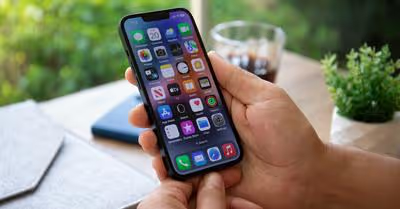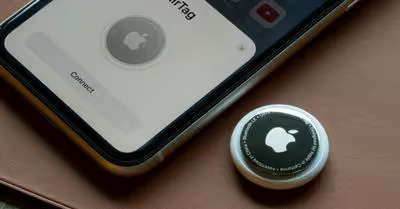Table of Contents
Factors Affecting Apple Music Data Consumption
Apple Music is a streaming service that offers its users a huge library of songs to listen to. While it's a great way to discover new music, it can also use up a lot of data. There are a few factors that affect how much data Apple Music uses.
The first is the quality of the stream. Apple Music offers three different quality options: high, medium, and low. The higher the quality, the more data is used. The second factor is whether or not you download songs for offline listening.
When you download a song, Apple Music saves it to your device so you can listen to it without an internet connection. This means that you'll use less data when listening to downloaded songs than when streaming them. Finally, the third factor is how often you use Apple Music. If you only listen to it occasionally, you won't use as much data as someone who listens to it all day long. Keeping these factors in mind, you can better control your Apple Music data consumption.
Which Devices Can You Use Apple Music On
Apple Music offers access to millions of songs, ad-free. It's available on Apple devices (iPhone, iPad, iPod touch, Mac, and Apple TV), Android devices, Sonos speaker systems, select Samsung smart TVs, and more.
You can also listen to Apple Music on your Amazon Echo device. If you have an Apple Music subscription, you can listen to Apple Music on up to 10 devices at a time. To use Apple Music, you need to sign up for a subscription and have the latest version of iOS or macOS. You can also listen to Apple Music on your web browser.
Can You Use Apple Music Offline
As discussed above, Apple Music gives you access to over 50 million songs. While it does require an internet connection to stream music, Apple Music also allows users to download songs, albums, and playlists for offline listening. This can be useful when you're going on a trip or otherwise won't have access to data or Wi-Fi. Apple Music offline listening is available on iPhone, iPad, iPod touch, and Mac or PC.
To download music for offline listening, simply open the Apple Music app and find the song, album, or playlist you want to download. Then, tap the More button (three dots) and select Make Available Offline.
The music will then be downloaded to your device so you can listen even when you're not connected to the internet. Note that you need an Apple Music subscription to download songs for offline listening; if you cancel your subscription, any downloaded music will be inaccessible.
Difference Between Apple Music and iTunes
Apple Music and iTunes are both services from Apple designed to give users access to music. Apple Music is Apple’s streaming service, while iTunes is a media player that can be used to purchase, download, and edit audio files. Apple Music offers a catalog of over 50 million songs that can be streamed ad-free and downloaded for offline listening.
iTunes, on the other hand, allows users to purchase and download songs to their computer or device. Users can also create their digital library by ripping CDs or obtaining music files from other sources.
While Apple Music requires a monthly subscription, iTunes is available for purchase on a per-song or per-album basis. In addition, Apple Music offers access to exclusives and live radio, while iTunes does not. Ultimately, the choice between Apple Music and iTunes comes down to personal preference and needs.
How to Use Apple Music on CarPlay
There's no need to be tethered to your iPhone when you're behind the wheel. Apple Music on CarPlay lets you enjoy all of your favorite music without ever having to take your eyes off the road. With Siri support, you can even control playback with just your voice. Here's how to get started:
- Make sure that your iPhone is running iOS 8 or later and that you have an Apple Music subscription.
- Connect your iPhone to your car's infotainment system using a Lightning cable.
- On your iPhone, open the Settings app and go to the General > CarPlay menu.
- Select Apple Music from the list of apps.
- Start playing any song, album, or playlist that you like. The music will begin streaming through CarPlay automatically.
- To control playback, just ask Siri. For example, you can say "play the latest album from Taylor Swift" or "skip this song."
That's all there is to it! With Apple Music on CarPlay, you can enjoy all of your favorite tunes without ever taking your hands off the wheel.
Apple Music Vs. Spotify
Apple Music and Spotify are two of the most popular streaming services available today. Both offer a vast library of songs, ad-free listening, and offline playback. So, which is the better option? When it comes to data consumption, Apple Music is the clear winner.
Apple Music streams at a bitrate of 256kbps, while Spotify maxes out at 160kbps. This means that Apple Music uses less data when streaming over mobile data networks. For example, if you stream one hour of Apple Music per day over a 4G connection, you'll use around 2GB of data per month.
On Spotify, that same hour of listening would use up 3GB of data. That might not seem like much, but if you have a limited data plan, it can make a big difference. Apple Music also offers some features that Spotify doesn't, such as support for Apple's Siri assistant and integration with the Home Pod speaker.
If you're an Apple user, these may be enough to tip the scales in favor of Apple Music. However, if you're primarily interested in saving data when streaming music, Apple Music is the better choice.
So, how much data does Apple Music use? It turns out that the streaming service isn’t as bad as you might think. It’s pretty comparable to other music streaming services when it comes to data usage. If you’re a fan of Apple Music and are worried about your data cap, don’t be – you should still be able to enjoy your tunes without any issues.
Recent Articles

















